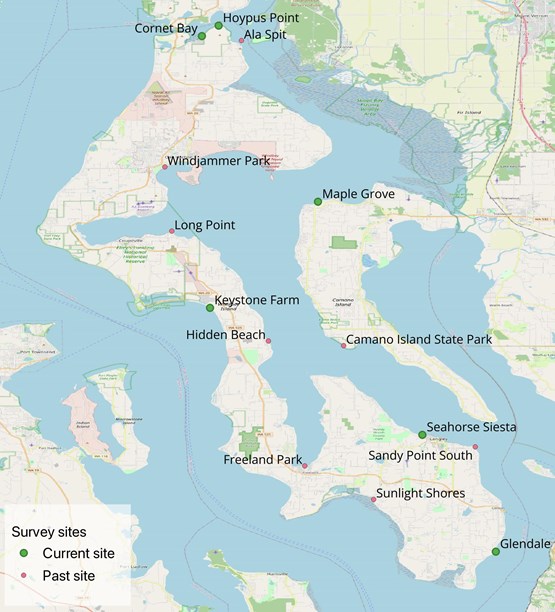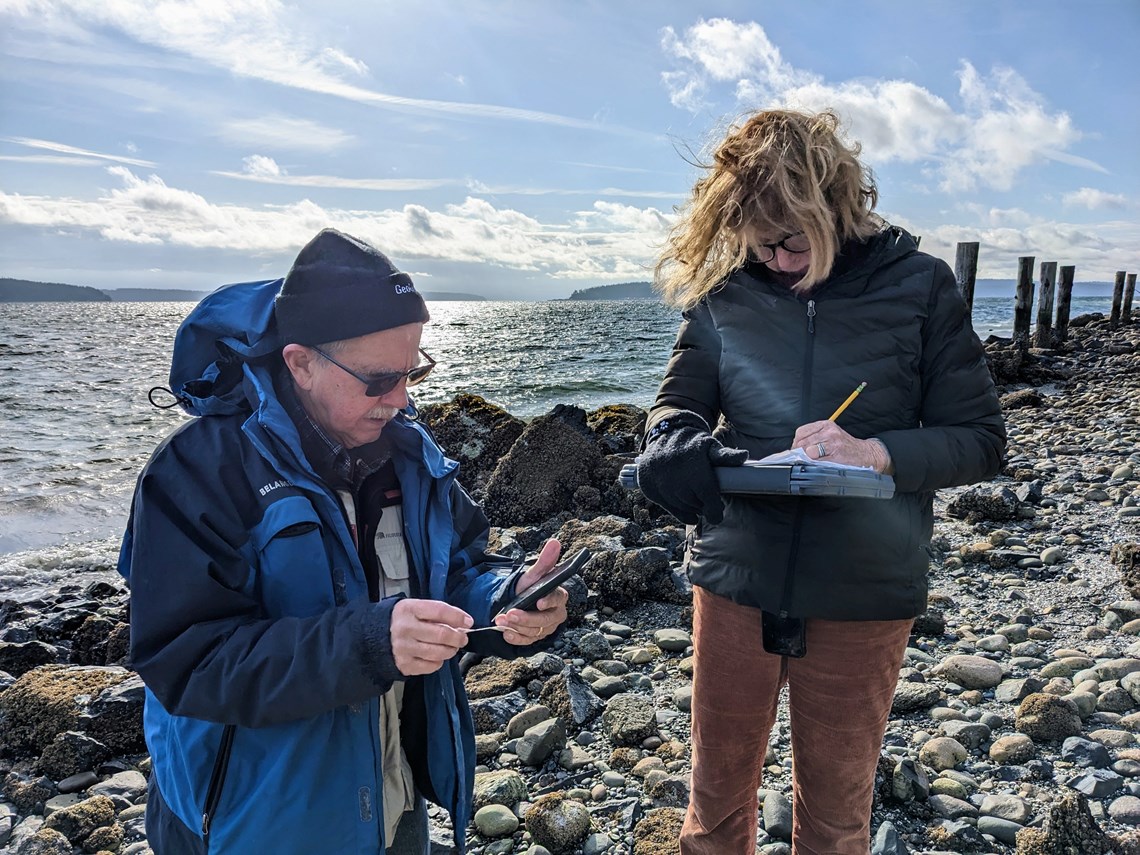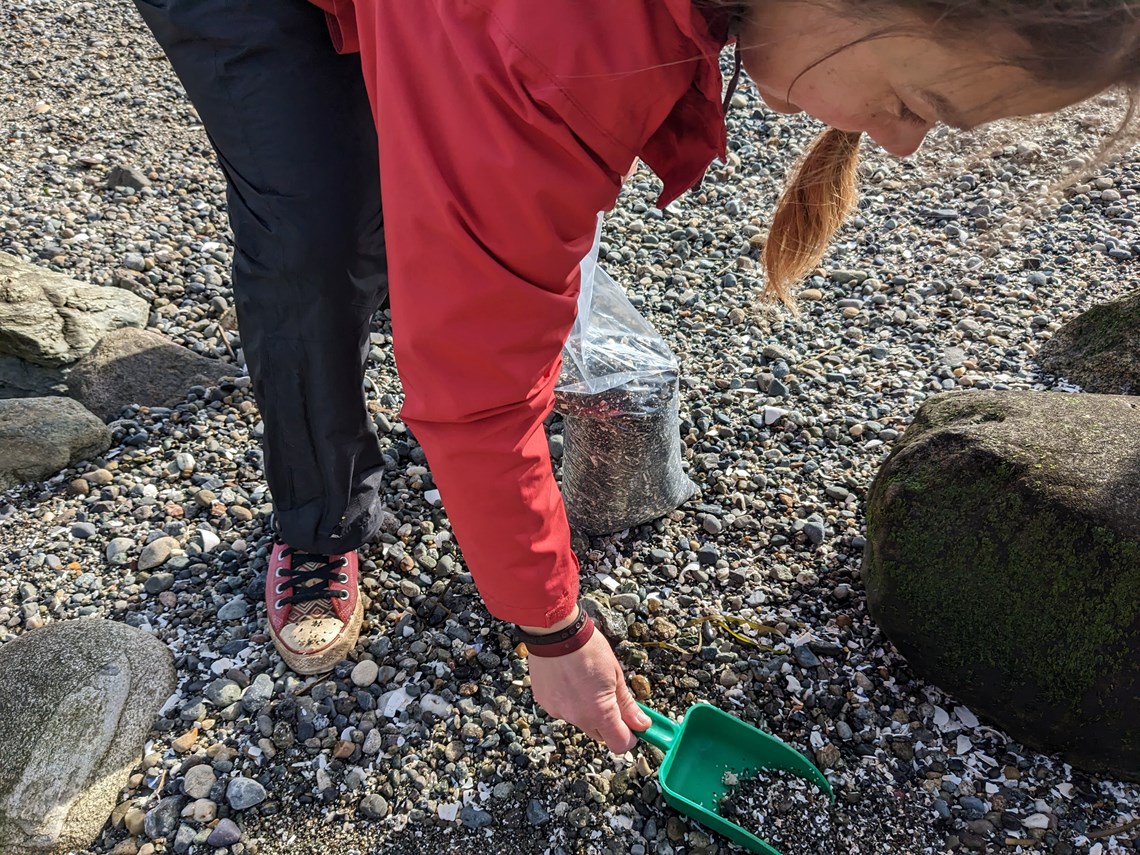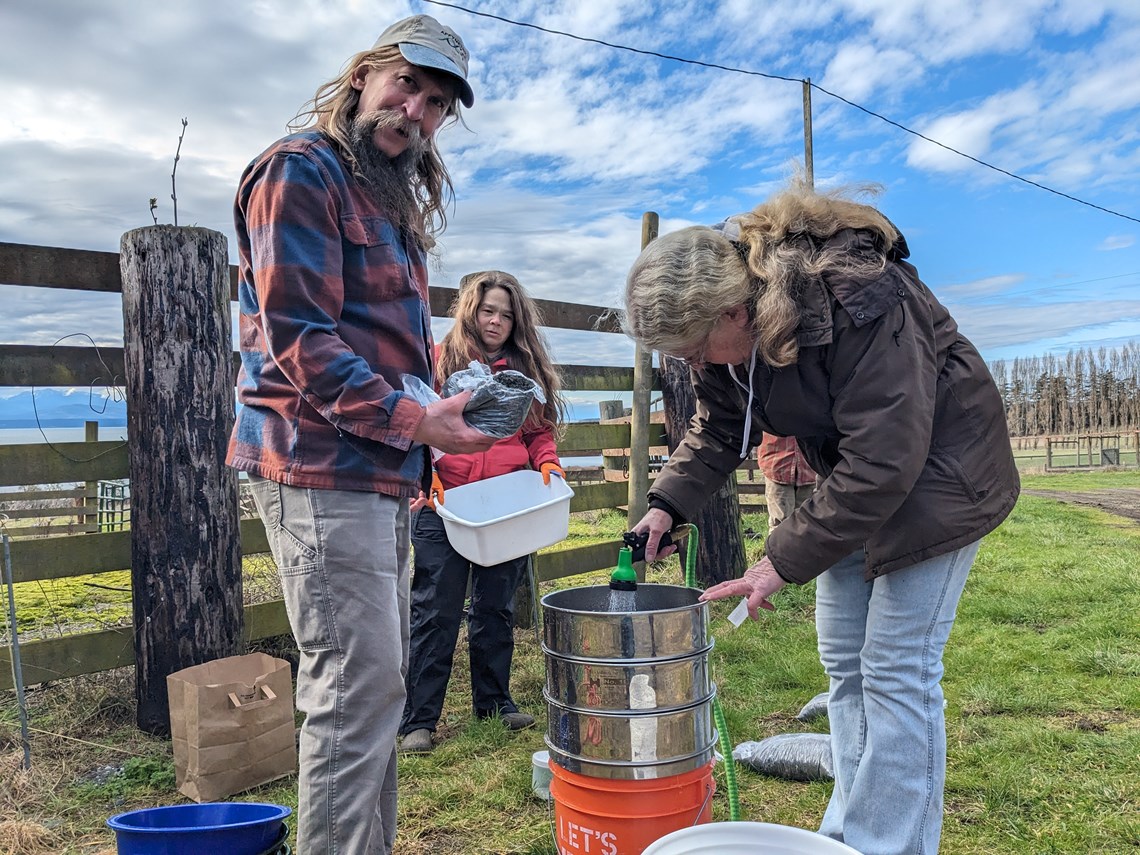 Forage Fish Survey Sites
Forage Fish Survey Sites
Forage Fish Survey Sites
Current sites:
1. Cornet Bay
Surf smelt eggs were found for the first time at Cornet Bay! Restoration work at Cornet Bay has included creosote bulkhead removal, fill removal, beach regrading, and re-establishing native vegetation. In September 2016, eggs were found at the natural beach sample site just adjacent to where restoration work has been completed. In August 2017, eggs were found within the restored area, where a bulkhead had been removed and the beach regraded to a natural condition.
2. Hoypus Point
Restoration in 2022 removed a 350 linear foot dilapidated bulkhead. The bulkhead was composed of large rock and concrete debris and backfilled with what appeared to be native beach sediments. The shoreline was restored to more natural conditions and gradients. Surveys beginning in 2020 have found surf smelt eggs every summer.
3. Maple Grove
This site is a popular public fishing site for surf smelt. Surf smelt eggs have been observed May through October for multiple years.
4. Keystone Farm
Keystone Farm and Forest Reserve is a 216 acre property acquired by the Whidbey Camano Land Trust in April of 2022. The property includes a beach house and short bulkhead that will be removed in 2024 as part of the habitat restoration of the site. Forage fish spawn surveying started at Keystone Farm in October 2023 on the shore beneath the bulkhead and at another site south of the bulkhead that is beneath undisturbed forest. Sampling will continue during and after the restoration work.
5. Seahorse Siesta
This site had a barge and bulkhead removed in the fall 2020-winter 2021. Winter surveying since the restoration has found sand lance eggs.
7. Glendale
This site is at the mouth of Glendale Creek, which is a salmon-bearing stream. The MRC has been monitoring here since January 2017, and has not documented spawn presence to date.


